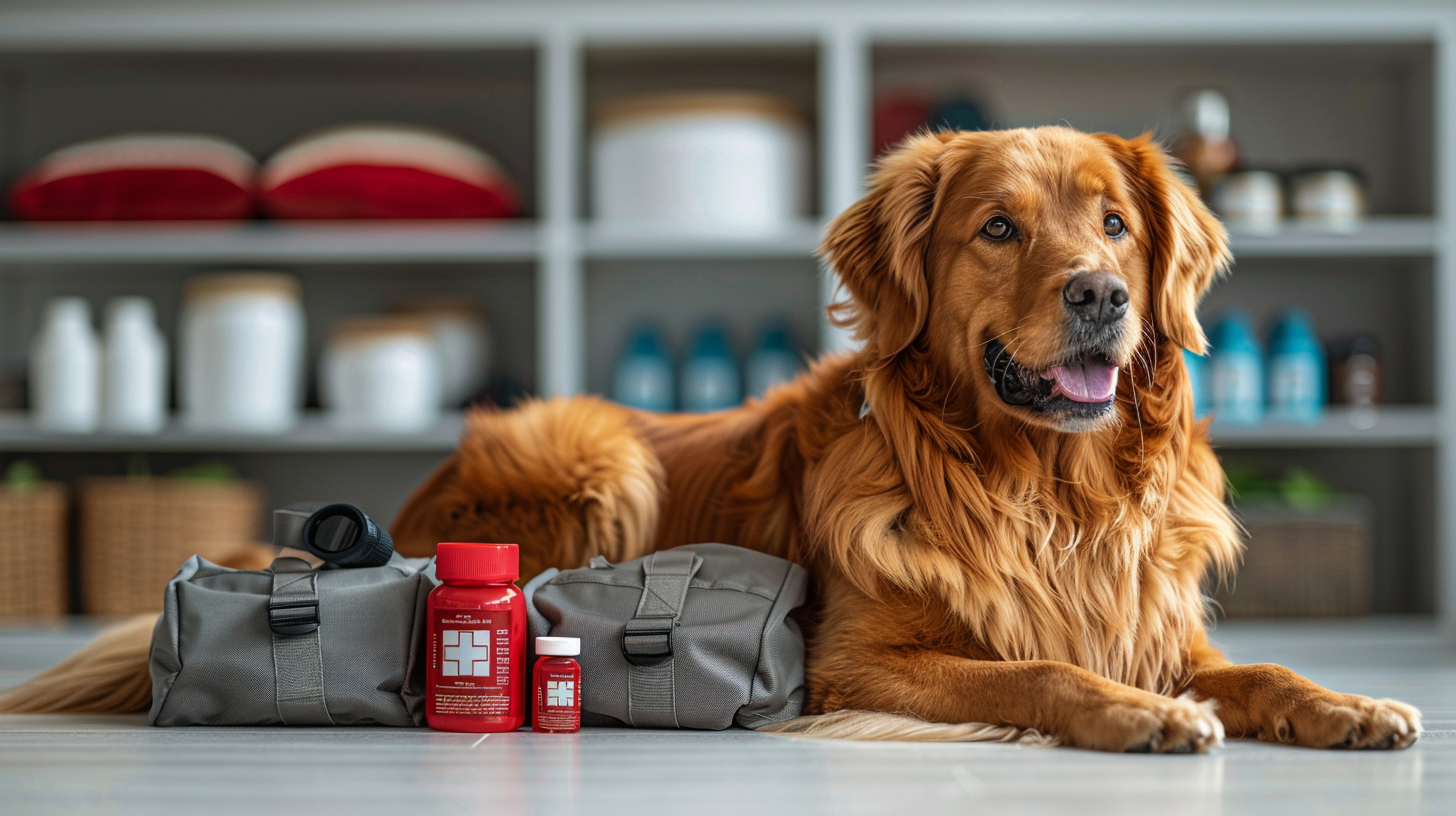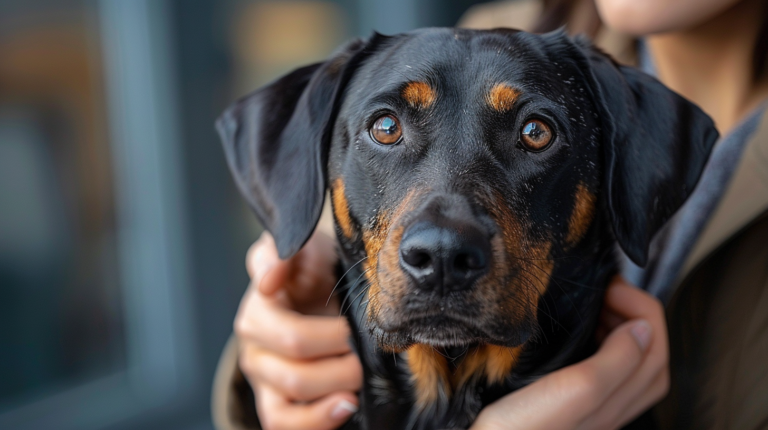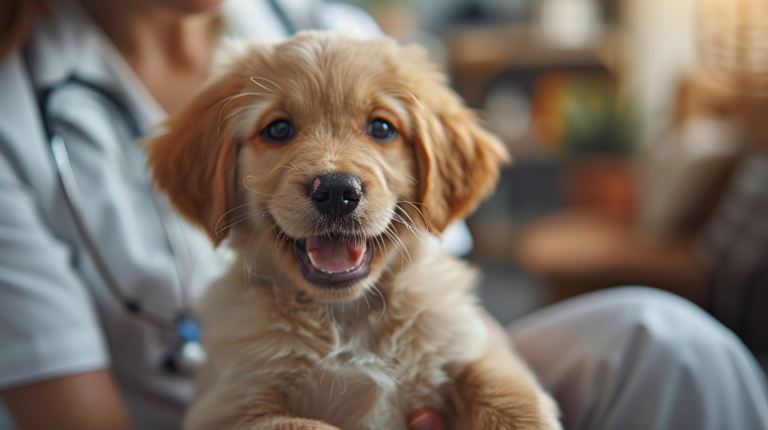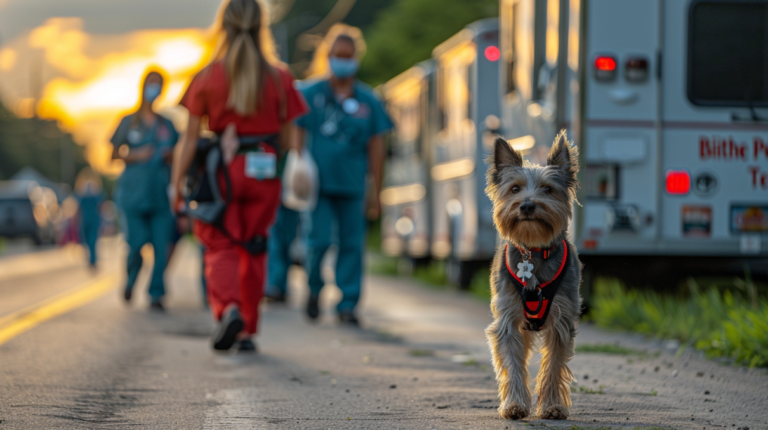Learn how to create a complete pet first aid kit with our comprehensive DIY guide. Essential supplies, usage techniques, and emergency tips for responsible pet owners.
Table of Contents
Preparing for Pet Emergencies
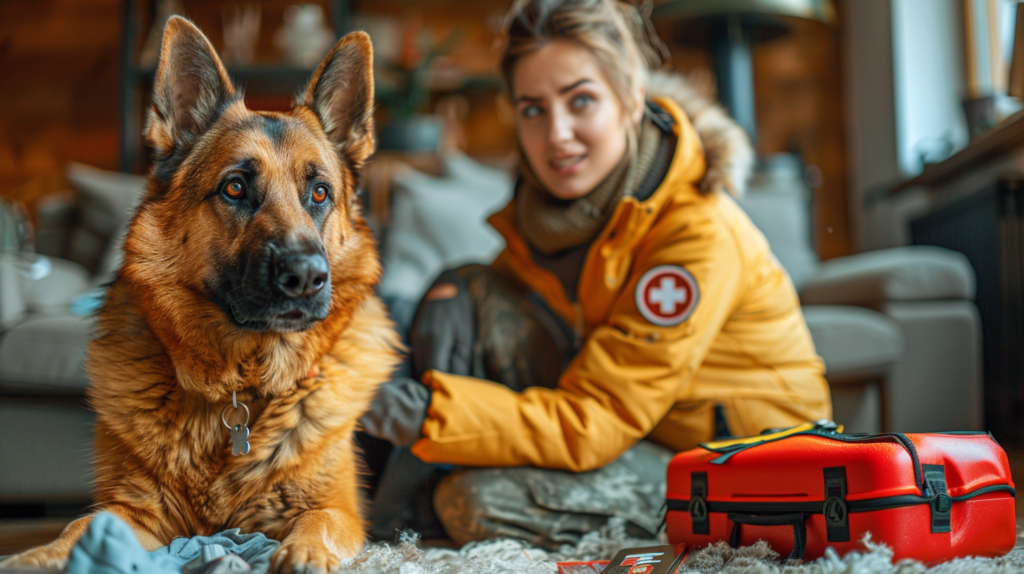
When it comes to our furry family members, being prepared for emergencies isn’t just responsible pet ownership—it’s an act of love. A comprehensive pet first aid kit can mean the difference between panic and preparedness when your pet faces an injury or sudden illness. According to the American Veterinary Medical Association, 1 in 3 pets will require emergency care each year, yet fewer than 40% of pet owners have a dedicated first aid kit for their animals.
Creating your own DIY pet first aid kit ensures you have the right supplies tailored to your pet’s specific needs, whether you have a dog, cat, or small animal companion. This comprehensive guide will walk you through everything you need to assemble a complete emergency kit, how to use the supplies properly, and when to seek professional veterinary care.
Remember that while a pet first aid kit can help stabilize your pet during an emergency, it’s not a replacement for professional veterinary care. Always contact your veterinarian or emergency animal hospital when your pet is injured or ill.
Why Every Pet Owner Needs a First Aid Kit
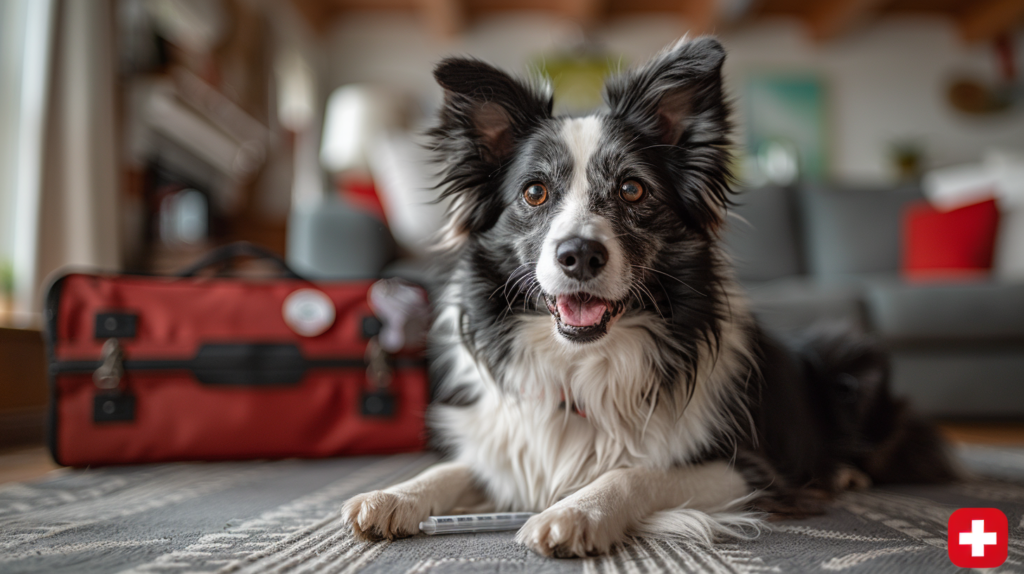
Before diving into the components of a pet first aid kit, let’s understand why having one is so crucial:
Immediate Response Capability
When injuries occur, those first few minutes are critical. Having the right supplies on hand allows you to provide immediate care before you can reach a veterinarian. Dr. Sarah Johnson, emergency veterinarian at Pacific Animal Hospital, explains: The initial response to pet injuries can significantly impact recovery outcomes. A well-stocked first aid kit gives owners the tools they need to stabilize their pet during that crucial window.
Peace of Mind
Knowing you’re prepared for emergencies brings invaluable peace of mind. Pet emergencies rarely happen at convenient times, and having a pet first aid kit readily available means you’re always prepared.
Cost-Effective Prevention
Minor injuries that are properly treated early may prevent more serious complications that could require expensive veterinary intervention. A study by the Pet Health Network found that proper first aid administration can reduce emergency veterinary costs by up to 30% in certain situations.
Travel and Outdoor Adventure Readiness
Whether you’re hiking with your dog, camping with your cat, or simply traveling to visit family, having a portable pet first aid kit ensures you’re prepared no matter where you are.
Essential Components of Your Pet First Aid Kit
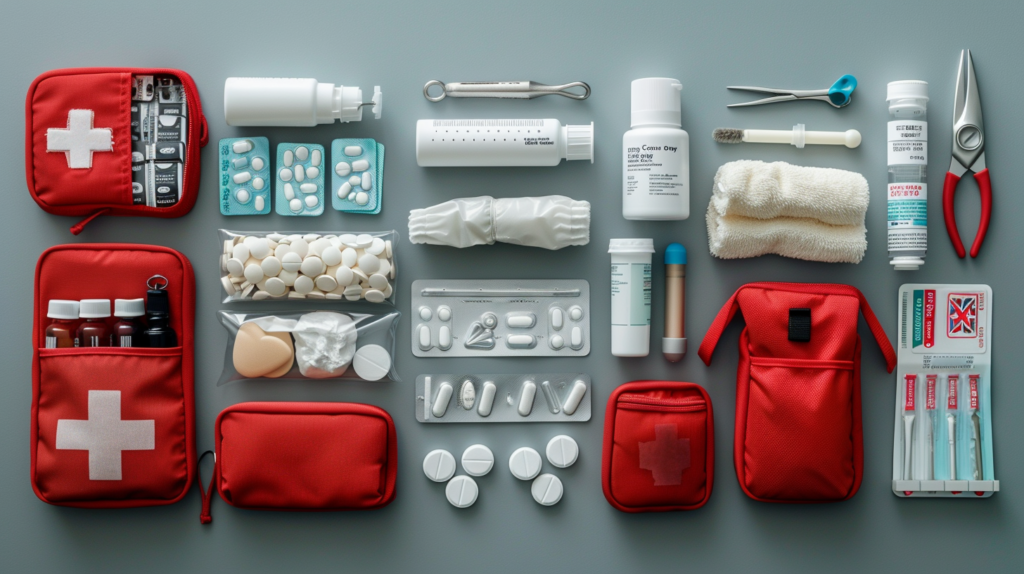
Creating a comprehensive pet first aid kit requires thoughtful selection of supplies. Here’s a detailed breakdown of what to include:
Basic Medical Supplies
These fundamental items form the core of your pet first aid kit:
- Digital thermometer (specifically for rectal use in pets)
- Blunt-tipped scissors for cutting fur around wounds
- Tweezers for removing splinters, ticks, or debris
- Disposable gloves (non-latex if possible)
- Gauze pads (various sizes, non-stick)
- Gauze rolls (2-inch and 3-inch widths)
- Adhesive medical tape
- Cotton balls and swabs
- Sterile saline solution for wound cleaning
- Hydrogen peroxide 3% (only use when directed by a veterinarian)
- Antiseptic wipes
- Instant ice packs
- Oral syringe or turkey baster for administering fluids or flushing wounds
- Pet-safe wound cleanser
- Styptic powder to stop bleeding from minor cuts (especially useful for nail trimming accidents)
Bandaging Materials
Proper wound care often requires specialized bandaging supplies:
- Self-adhering bandage wraps (like Vetrap or PetFlex) that don’t stick to fur
- Elastic bandage wraps
- Adhesive bandages (assorted sizes)
- Sterile non-stick pads
- Cornstarch (as a natural blood-clotting agent for minor cuts)
Medications and Treatments
Always consult with your veterinarian before administering any medications:
- Antibiotic ointment (veterinary-approved)
- Hydrocortisone cream (1%) for itch relief
- Diphenhydramine (Benadryl) – check with your vet for proper dosage
- Pet-specific eye wash
- Ear cleaning solution formulated for pets
- Pet-safe insect repellent
- Activated charcoal (only use when directed by a veterinarian or poison control)
Tools and Equipment
These specialized items can be invaluable during emergencies:
- Pet carrier or transporter
- Muzzle or cloth strip to prevent biting (never muzzle vomiting pets)
- Towels and/or emergency blanket
- Flashlight with extra batteries
- Rectal thermometer (digital)
- Small magnifying glass for examining wounds or removing splinters
- Tick removal tool
- Nail clippers and styptic powder
- Splints or tongue depressors for stabilizing injuries
Documentation and Reference Materials
Information is a crucial part of emergency preparedness:
- Pet first aid manual or app
- List of emergency phone numbers including:
- Your regular veterinarian
- Nearest 24-hour emergency vet clinic
- Animal poison control center (ASPCA: 888-426-4435)
- Local animal control
- Copy of your pet’s medical records including:
- Vaccination history
- Chronic conditions
- Current medications and dosages
- Microchip information
- Recent photo of your pet (useful if they become lost during an emergency)
- Pet emergency card with your contact information
Creating Your Custom Pet First Aid Kit
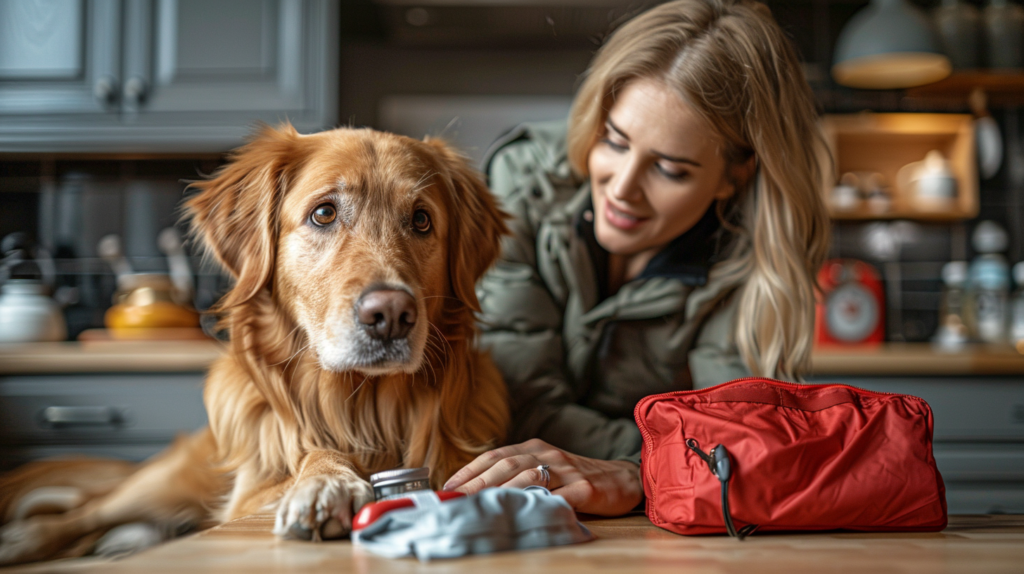
Now that you know what goes into a pet first aid kit, let’s discuss how to assemble one that’s perfect for your specific pet:
Step 1: Choose the Right Container
Select a container that is:
- Waterproof
- Durable
- Easy to open
- Clearly labeled
- Appropriately sized for your supplies
Good options include:
- Plastic tackle boxes
- Toolboxes with compartments
- Clear plastic storage containers
- Commercial first aid kit boxes
- Waterproof duffel bags (for larger kits)
Step 2: Organize Contents Logically
- Group similar items together (bandages, medications, tools)
- Use small zip-top bags or containers to keep items separate and easily accessible
- Label everything clearly, including expiration dates
- Place frequently used items near the top for quick access
Step 3: Customize for Your Pet’s Specific Needs
Different pets require different considerations:
For Dogs:
- Include a muzzle in appropriate size
- Add booties for paw protection
- Consider a emergency sling or carrier for larger dogs
- Include extra gauze and bandaging for larger wounds
For Cats:
- Include a smaller muzzle or thick towel for restraint
- Add cat-specific calming products
- Include smaller bandaging materials
- Add cat carrier blanket with familiar scent
For Small Pets (rabbits, guinea pigs, etc.):
- Include small pet-specific restraint methods
- Add critical care feeding formula
- Include smaller syringes for medication
- Add specialized small animal handling gloves
Step 4: Create Multiple Kits for Different Locations
Consider creating several pet first aid kits for different scenarios:
- Home Base Kit: Your most comprehensive kit kept in a central location
- Car Kit: A smaller version kept in your vehicle
- Travel Kit: Compact version for trips and adventures
- Outdoor Activity Kit: Specialized kit for hikes, swimming, or camping
How to Use Your Pet First Aid Kit: Key Techniques

Having supplies is important, but knowing how to use them properly is essential. Here are some fundamental pet first aid techniques:
Checking Vital Signs
Know what’s normal for your pet:
- Temperature:
- Dogs: 101.0 to 102.5°F (38.3 to 39.2°C)
- Cats: 100.5 to 102.5°F (38.1 to 39.2°C)
- Heart Rate:
- Dogs: 60-140 beats per minute (varies by size)
- Cats: 140-220 beats per minute
- Respiratory Rate:
- Dogs: 10-30 breaths per minute
- Cats: 20-30 breaths per minute
- Gum Color: Should be pink (not pale, blue, or bright red)
Wound Cleaning and Bandaging
- Clean the wound:
- Gently remove debris with tweezers if necessary
- Flush with sterile saline solution
- Clean surrounding area with mild antiseptic
- Apply appropriate dressing:
- Use non-stick pad directly on wound
- Secure with gauze wrap
- Add layer of self-adhering bandage
- Ensure bandage is snug but not tight (should fit two fingers underneath)
- Monitor and change regularly:
- Check bandages at least twice daily
- Look for signs of infection or worsening
- Replace if wet, dirty, or loose
Safe Pet Restraint Methods
Injured pets may bite or scratch, even if they’re normally gentle:
- For dogs:
- Approach calmly and reassuringly
- Use proper-sized muzzle if necessary
- Consider gentle wrapping in blanket for small dogs
- For cats:
- Use a towel wrap technique
- Scruff only when absolutely necessary and support weight
- Consider a cat restraint bag for procedures
Administering Medications
Always follow veterinary guidance:
- Pills and capsules:
- Use pill pockets or hide in soft food
- Use a pill dispenser for direct administration
- Follow with water
- Liquid medications:
- Use oral syringe placed in corner of mouth
- Administer slowly to prevent choking
- Reward after administration
Common Pet Emergencies and First Aid Responses
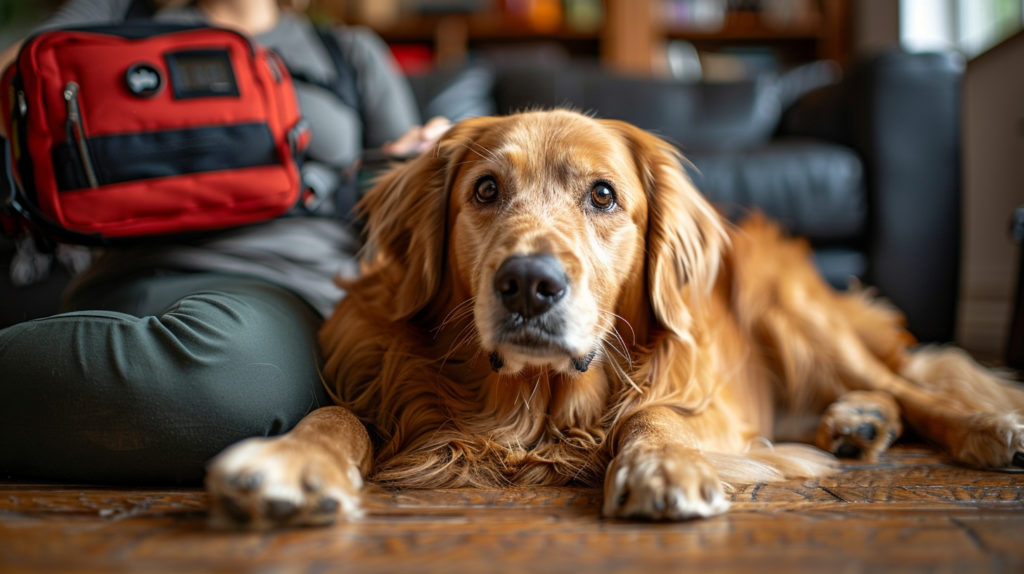
Let’s explore some common emergencies and how your pet first aid kit can help:
Cuts and Scrapes
Symptoms:
- Visible wound
- Bleeding
- Pain or sensitivity
- Licking or attention to area
First Aid Response:
- Clean wound with sterile saline solution
- Apply gentle pressure with clean gauze if bleeding
- Apply appropriate antibiotic ointment if recommended by your vet
- Bandage if necessary to prevent contamination
- Monitor for signs of infection
When to See a Vet:
- Deep wounds requiring stitches
- Puncture wounds
- Heavy bleeding that doesn’t stop
- Signs of infection (swelling, discharge, increased pain)
Insect Stings and Bites
Symptoms:
- Sudden yelping or pain
- Swelling at site
- Excessive licking or scratching
- Potential allergic reaction (facial swelling, hives, difficulty breathing)
First Aid Response:
- Remove stinger if visible (scrape, don’t pinch)
- Apply cold compress to reduce swelling
- Monitor for allergic reaction
- Administer veterinarian-approved antihistamine if previously instructed
When to See a Vet:
- Facial swelling
- Difficulty breathing
- Multiple stings
- Continued pain or swelling after 24 hours
Heatstroke
Symptoms:
- Excessive panting
- Drooling
- Red gums
- Lethargy
- Vomiting
- Collapse
First Aid Response:
- Move pet to cool area immediately
- Apply cool (not cold) water to body
- Place wet towels on head, neck, and groin
- Offer small amounts of water if conscious
- Take temperature if possible
When to See a Vet:
- Always seek immediate veterinary care for suspected heatstroke
Poisoning
Symptoms:
- Sudden illness
- Vomiting or diarrhea
- Drooling
- Seizures
- Lethargy
- Abnormal behavior
First Aid Response:
- Remove pet from source of poison
- Do NOT induce vomiting unless instructed by vet or poison control
- Contact pet poison helpline or vet immediately
- Bring sample of toxin or packaging to vet if possible
When to See a Vet:
- Always seek immediate veterinary care for suspected poisoning
Choking
Symptoms:
- Difficulty breathing
- Pawing at mouth
- Blue-tinged gums
- Panic
- Unconsciousness
First Aid Response:
- Look in mouth and remove visible objects if possible
- For small pets, hold upside down momentarily
- For larger pets, perform modified Heimlich maneuver if trained
- Do not perform blind finger sweeps
When to See a Vet:
- Always seek immediate veterinary care after a choking incident
Maintenance and Storage of Your Pet First Aid Kit
Proper maintenance ensures your pet first aid kit is ready when you need it:
Regular Inspections
- Check expiration dates monthly
- Replace used items immediately
- Verify equipment functionality (thermometer batteries, flashlight)
- Update contact information as needed
Proper Storage Conditions
- Keep in a cool, dry place
- Store out of reach of pets and children
- Keep away from extreme temperatures
- Ensure container remains clean and intact
Annual Overhaul
- Complete replacement of expired items
- Thorough cleaning of container
- Review and update of documentation
- Reconsideration of contents based on pet’s changing needs
Pet First Aid Training and Resources
Having a kit is just the beginning. Consider enhancing your preparedness with:
Pet First Aid Courses
Several organizations offer specialized pet first aid training:
- American Red Cross
- Pet Tech
- Pro Training Pet First Aid
- Fear Free Pet First Aid
Mobile Apps for Pet Emergencies
Download these helpful resources:
- Pet First Aid by American Red Cross
- PetDesk
- Pet Emergency Guide
- Paws Hero
Online Resources and Communities
Join these helpful groups:
- Pet First Aid & CPR Facebook Group
- Reddit’s r/AskVet community
- AKC Pet First Aid Resources
- ASPCA Poison Control Resources
When to Skip First Aid and Go Straight to the Vet
While a pet first aid kit is essential, some emergencies require immediate professional care:
Life-Threatening Emergencies
- Difficulty breathing
- Severe bleeding
- Suspected broken bones
- Loss of consciousness
- Seizures
- Bloated, hard abdomen
- Inability to urinate
- Prolonged vomiting or diarrhea
- Suspected poisoning
- Eye injuries
- Severe burns
- Heatstroke
- Birth complications
In these cases, apply only the most basic first aid (like controlling bleeding) while arranging immediate transportation to a veterinary facility.
Creating a Pet Emergency Plan
Your pet first aid kit should be part of a broader emergency plan:
Identify Emergency Veterinary Services
- Know locations and phone numbers of:
- Your regular veterinarian
- Nearest 24-hour emergency clinic
- Mobile veterinary services
- Program these numbers into your phone
- Keep printed list in your first aid kit
Establish Transportation Plans
- Identify how you’ll transport an injured pet
- Have appropriate carriers accessible
- Keep emergency gas money available
- Know alternative routes to veterinary facilities
Designate a Pet Emergency Buddy
- Exchange keys with a trusted friend or neighbor
- Ensure they know your pets’ needs
- Share location of pet first aid kit and veterinary information
Special Considerations for Multi-Pet Households
Managing emergencies with multiple pets requires additional planning:
Separate Supplies When Necessary
- Individual medication lists
- Separate restraint equipment
- Species-specific supplies
Preventing Cross-Contamination
- Use separate bandaging materials
- Disinfect equipment between uses
- Maintain separate isolation areas if needed
Managing Multiple Pets During Emergencies
- Secure uninjured pets before treating injured ones
- Have separate carriers available
- Consider emergency boarding options
Pediatric vs. Senior Pet First Aid Considerations
Age-specific adjustments to your pet first aid kit can be crucial:
For Puppies and Kittens
- Smaller bandaging materials
- Pediatric thermometer
- Bottle feeding supplies
- Warming devices (carefully monitored)
- Lower medication dosages (veterinarian-directed)
For Senior Pets
- Supportive harnesses or slings
- Mobility aids
- Medication organizers
- Extra padding for comfort
- Special dietary needs during recovery
Seasonal Updates to Your Pet First Aid Kit
Different seasons bring different risks. Adjust your pet first aid kit accordingly:
Summer Additions
- Cooling mats or bandanas
- Extra water and portable bowls
- Paw protection for hot surfaces
- Tick removal tools
- Pet-safe insect repellent
- Pet-safe sunscreen
Winter Additions
- Emergency blankets
- Paw protection for ice/salt
- Warming packs (use with caution)
- Petroleum jelly for paw protection
- Anti-freeze poisoning information
DIY vs. Pre-Made Pet First Aid Kits
Let’s weigh the options for creating your pet first aid kit:
Pre-Made Kit Benefits
- Convenience
- Professional organization
- May include pet-specific items
- Often comes with basic instruction guide
DIY Kit Advantages
- Customized to your pet’s needs
- Often more comprehensive
- Cost-effective for multi-pet households
- Can be expanded as needed
Hybrid Approach
Many pet owners find success with a hybrid approach:
- Start with a quality pre-made kit
- Supplement with pet-specific items
- Add personalized documentation
- Enhance with specialized tools
The Cost of Creating a Comprehensive Pet First Aid Kit
Understanding the investment required helps with planning:
| Kit Type | Estimated Cost | Contents |
| Basic DIY Kit | $30-50 | Essential bandaging, basic medications, documentation |
| Intermediate DIY Kit | $75-100 | Complete supplies, medications, tools, reference materials |
| Comprehensive DIY Kit | $150-200+ | All essentials plus specialized equipment, multiple carrying options |
| Commercial Basic Kit | $20-40 | Pre-packaged essentials, basic guide |
| Commercial Premium Kit | $60-120 | Comprehensive pre-packaged supplies, detailed guide |
Money-Saving Tips:
- Watch for sales on first aid supplies
- Purchase some items in bulk for multiple kits
- Ask your veterinarian for samples of specialized items
- Check dollar stores for basic supplies like bandages and gauze
For more expert pet care tips and product recommendations, visit BlithePet.com — your trusted source for pet wellness.
FAQs About Pet First Aid Kits
How often should I check and update my pet first aid kit?
Check your pet first aid kit monthly for expired items and depleted supplies. Perform a complete overhaul annually, replacing all expired medications and worn equipment. After using any supplies, replace them immediately to ensure your kit is always fully stocked.
Can I use human first aid supplies on my pet?
Some human first aid supplies are safe for pets, but many are not. Never use human medications without veterinary approval. Items like adhesive bandages, hydrogen peroxide, and certain antibiotic ointments may contain ingredients harmful to pets. Always use pet-specific products when available.
What’s the most commonly overlooked item in a pet first aid kit?
The most commonly overlooked item is proper documentation. Many pet owners assemble excellent supplies but forget to include their pet’s medical history, current medications, and emergency contact information. This documentation can be critical during emergencies, especially if someone else needs to care for your pet.
How do I restrain an injured pet safely?
Approach injured pets calmly and slowly. Even gentle pets may bite when in pain. For dogs, consider using a properly fitted muzzle (never use on vomiting pets). For cats, a thick towel can be used to wrap and restrain them. Always minimize restraint to what’s absolutely necessary and avoid putting pressure on injured areas.
Where should I keep my pet first aid kit?
Keep your primary pet first aid kit in an easily accessible location in your home, known to all family members. Consider creating smaller duplicate kits for your car, vacation home, or to leave with pet sitters. The kit should be stored in a cool, dry place out of direct sunlight to protect medications and supplies.
When should I call the vet instead of providing first aid?
While first aid can stabilize your pet, numerous conditions require immediate veterinary attention, including difficulty breathing, severe bleeding, suspected poisoning, seizures, eye injuries, broken bones, and heat stroke. When in doubt, contact your veterinarian or emergency clinic. First aid is meant to complement—not replace—professional veterinary care.
Conclusion
Being Prepared for Pet Emergencies
Creating a comprehensive pet first aid kit is one of the most important steps you can take as a responsible pet owner. While we hope you never need to use it, having these supplies ready and knowing how to use them properly provides invaluable peace of mind.
Remember that a pet first aid kit is just one component of emergency preparedness. Combine it with:
- Regular veterinary check-ups
- Pet first aid training
- Emergency planning
- Knowledge of your pet’s normal behavior and vital signs
By investing time in preparation now, you’re ensuring the best possible outcome should an emergency occur. Your pet depends on you for their safety and wellbeing—and with proper planning, you’ll be ready to provide the care they need when it matters most.
Have a similar experience with your pet? Share it in the comments below!

